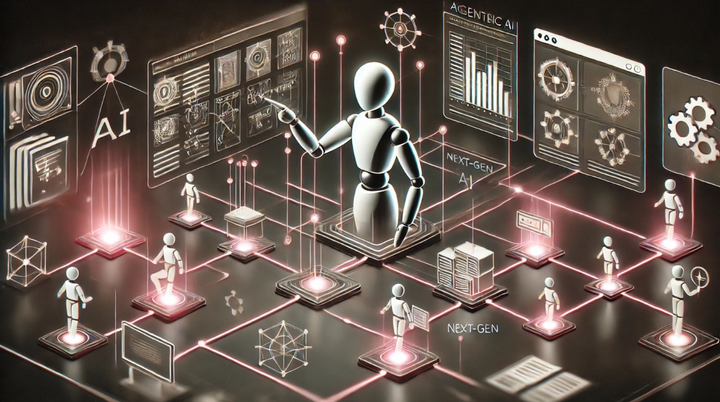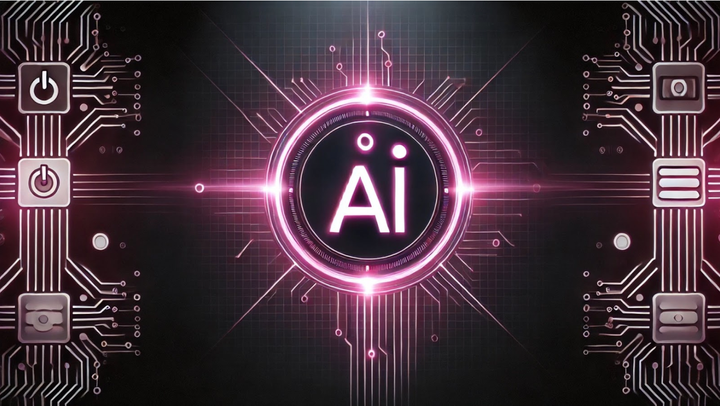Why AI is So Expensive

Artificial intelligence (AI) has become a fundamental part of business innovation across industries. The potential for AI software is huge—from automating mundane tasks to generating insights that drive strategic decisions. Yet, despite its growing importance, you might hesitate to implement AI solutions in your company. And it’s most likely because you’ve heard it’s so expensive.
While it’s true that building AI solutions can require significant investment, often starting at $500K or more, the notion that AI is prohibitively expensive across the board isn't entirely accurate.
Businesses can find ways to build AI models more cost-effectively, particularly with the right training techniques and tools. Understanding these costs can assist in making better decisions about integrating AI into business operations.
Why AI Is So Expensive
The cost of developing artificial intelligence solutions depends on several factors. Let’s break it down!
Data Collection
Collecting large, high-quality datasets is one of the most resource-intensive tasks in AI development. It requires specialized tools and significant time to ensure accuracy and usability. Companies must also prepare and label the data for AI models to interpret, which adds further complexity and cost.
Image from Forbes
Data scientists devote 60% of their efforts to cleaning and organizing data and another 19% to collecting datasets. This means around 80% of their work involves data preparation. This phase adds complexity and drives up costs, as companies often need to prepare and label data for AI models to interpret. In some cases, acquiring industry-specific data may involve additional licensing fees.
Specialized Talent
Hiring specialized talent like data scientists and AI engineers is a significant cost driver. As these roles require deep expertise across machine learning, data science, and AI engineering, which many companies struggle to build internally. Machine Learning Operations (MLOps), in particular, present challenges when it comes to establishing efficient model training workflows and scaling models effectively, making it even harder to find the right talent.
As these professionals command high salaries, competition drives wages up further, making talent acquisition a significant investment. Businesses risk delays and inefficiencies in their artificial intelligence projects without the right team.
Infrastructure
Building and maintaining the infrastructure needed for AI development adds significant costs. Powerful servers, GPUs, and cloud services are essential, especially as models grow in complexity. This need for computational power increases with larger datasets and more sophisticated algorithms, driving up expenses.
As AI projects scale, cloud-based solutions often become necessary, but they come with high computing power and storage fees. For example, cloud AI GPU instances can cost between $0.50 and $10 per hour.
Additionally, cloud service subscriptions from providers like AWS, Azure, and Google Cloud range from $1,000 to over $100,000 per month, depending on the functionality and support required.
Ongoing Maintenance
AI models require continuous monitoring, updating, and retraining to maintain optimal performance, leading to long-term operational expenses. These tasks ensure the AI adapts to new data patterns, changes in business goals, or the need for improved accuracy. Regular updates are crucial for keeping models competitive, especially as they age or as the market evolves.
For example, GPT models, widely used for natural language processing tasks, often have licensing fees and no free updates. For example, GPT-4 licensing fees range from $0.03 to $0.12 per 1,000 tokens for input and $0.06 to $0.25 per 1,000 tokens for output, with custom fine-tuning costing up to $100 per hour.
This means businesses must pay for every major improvement or retraining of the model, adding to long-term costs. Ongoing expenses such as server usage, retraining, and performance monitoring are essential to making AI projects sustainable over time. Failing to account for these can quickly lead to unsustainable costs.
Need for High-Performing Models
To remain competitive, businesses need AI models that are not only highly accurate but also efficient. Achieving this level of performance requires investment in cutting-edge technologies and tools. Advanced AI models demand considerable computational resources and specialized tools or techniques to meet precision and reliability standards.
Models trained without targeted knowledge injection are prone to generating irrelevant or fabricated information, known as “hallucinations.”
This is considered a “hallucination,” as there is no Harry Potter TV series in 2023. Ideally, the AI should respond, “there is not Harry Potter TV series.” But it fabricated an information instead.
These errors are costly to fix and undermine the overall value of the model.
Lastly, the high compute costs involved in training AI models from scratch often deter companies from building their own solutions. As a result, many businesses turn to more cost-effective alternatives like fine-tuning existing models using tools such as Low-Rank Adaptation (LoRA). While these options can reduce expenses, they may not always deliver the level of performance needed for specific, competitive use cases.
How Much Does AI Actually Cost?
Now that we’ve discussed the different factors that can drive up the cost, let’s talk about hard numbers, so you’ll have an idea of how much to invest.
Initial Setup
The initial setup phase can be particularly expensive, as it includes:
- Data collection
- Model creation
- Infrastructure setup
Gathering and preparing high-quality datasets is time-consuming and often requires specialized tools. Model creation, especially if it's custom-built, demands significant computational power and skilled personnel. Finally, investing in infrastructure—whether cloud-based solutions or on-premise servers—adds another layer of expense.
Typical Initial Setup Costs for AI Projects
- $5,000: Simple AI solutions, such as basic automation or entry-level machine learning models.
- $20,000 - $50,000: AI applications require specialized tools and data handling.
- $50,000 - $150,000: Projects involving complex data security and real-time processing.
- Above $500,000: Complex deep learning projects requiring high-end hardware, such as GPUs, and large datasets.
These costs typically cover everything from acquiring hardware (e.g., GPUs) to hiring data scientists and engineers to build and deploy the AI models.
Maintenance Costs
Once the AI model is up and running, it requires ongoing maintenance to continue performing optimally. This includes:
- Server usage
- Computer systems
- Updates
- Model retraining
These keep the AI current with new data and evolving business needs. Maintenance costs typically range from $8,999 to $14,999 yearly, depending on the infrastructure and the complexity of the AI models.
Additionally, software costs range from $30,000 to $45,000, and manpower costs for maintaining AI systems can range from $25 to $49 per hour, depending on the expertise required. The size of the company you hire for AI development also impacts the budget:
- Small companies: $20,000 to $45,000
- Mid-sized companies: $50,000 to $100,000
- Large companies: $100,000 to $1,500,000
These costs ensure that the AI remains functional, up-to-date, and aligned with business goals.
Potential Hidden Costs
Aside from the obvious expenses, businesses may overlook several hidden costs. For example, scaling an AI system can be surprisingly expensive. As models grow and require more computational power, costs can rise sharply.
For instance, the average cost of running a single AI model on cloud infrastructure can range between $30,000 to $80,000 annually, depending on the model's size and complexity.
How to Decrease AI Costs
Although developing AI capabilities can seem daunting in terms of cost, several strategies can be implemented to reduce these expenses without sacrificing performance. One key approach is to use techniques like model merging, spectrum, and tools like DistillKit, which allow companies to refine and optimize their models efficiently.
Model Merging
Model merging combines multiple pre-trained models into a unified system, preserving the strengths of each model while minimizing compute costs. Using MergeKit, our open-source toolkit, this process requires no GPUs and significantly reduces training time. By loading only necessary tensors, MergeKit scales efficiently, from high-end clusters to laptops with limited resources. Unlike ensembling, model merging yields a single, optimized model, enhancing performance without increasing model size.
DistillKit and Spectrum-Powered Training
Tools like DistillKit allow for AI model compression, making the models more lightweight and easier to deploy without sacrificing performance. This tool is useful for businesses wanting to reduce the operational costs associated with large, resource-intensive AI models.
Additionally, spectrum is effective training method for Large Language Models (LLMs). It is designed to optimize the training process by selectively updating specific layers based on their signal-to-noise ratio (SNR). Instead of updating all layers, spectrum focuses on layers with high SNR, which contribute most to performance improvements, while freezing low SNR layers. This targeted approach enhances training efficiency and reduces computational power, helping businesses lower costs compared to traditional methods that train models from scratch.
These strategies offer businesses the opportunity to use cutting-edge AI solutions while maintaining control over their budgets - usually 50%-75% cost saving compared to closed source LLMs. By employing efficient tools and techniques, companies can dramatically cut down on AI development costs.
Frequently Asked Questions about AI Cost
How much does AI usually cost?
AI costs can vary widely depending on the project's scope, ranging anywhere from $5,000 to over $500,000 for initial setup. Maintenance costs add another from $8,999 to $14,999 annually. Hidden costs like scaling and integration with existing systems also add up over time. Make sure to plan for these expenses.
Is AI getting cheaper?
Businesses can reduce expenses by using efficient techniques like model merging and spectrum. Plus, the rise of cloud-based AI platforms and infrastructure options allows companies to reduce upfront hardware investments.
What are the reasons AI costs have increased so much?
AI costs have risen due to the complexity of models, demand for high-performance hardware, and specialized talent. Larger models need more data, increasing compute costs. Licensing fees for advanced models like GPT, which don’t include free updates, further add to the overall expense.
Is the cost of AI decreasing?
Investing in AI solutions can seem costly, but businesses can reduce expenses by using pre-trained models instead of building from scratch. Ongoing advancements in AI make it easier to refine models, cutting computational and operational costs over time.
Conclusion
AI development can be costly, but with the right techniques—such as model merging, spectrum, and targeted knowledge injection—businesses can significantly reduce expenses while achieving high performance. These strategies cut down on infrastructure and computational costs.
Ready to build your own AI while keeping full control? Arcee AI helps you create specialized models using efficient model merging, ensuring accuracy and ownership of your solutions. Book a demo here to see how we can help your organization.


